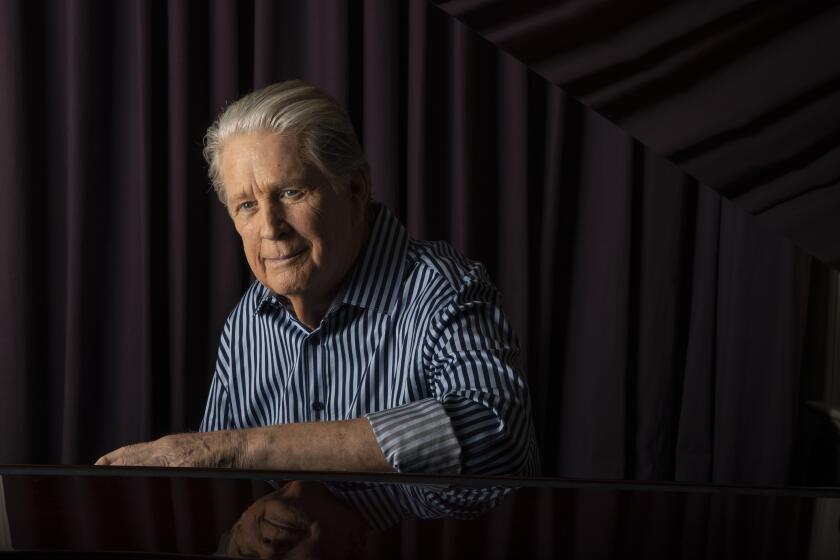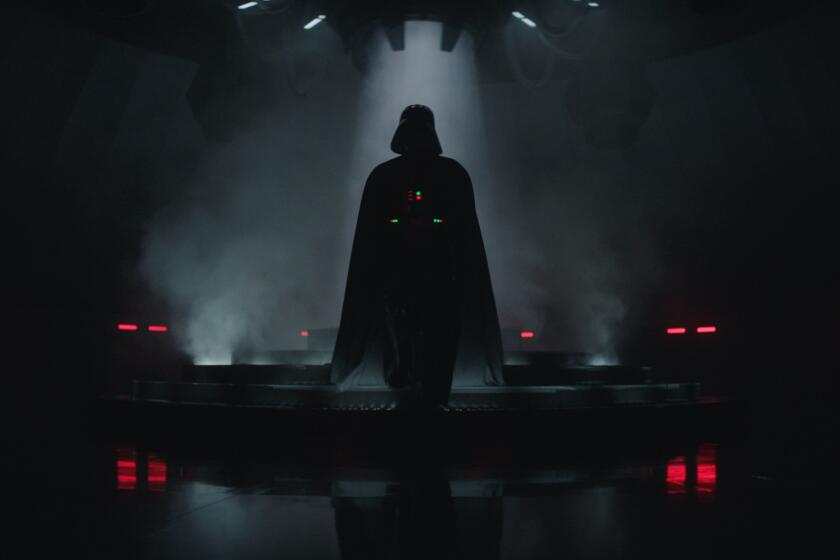Taking Time to Concentrate on Feldman
- Share via
NEW YORK — Morton Feldman’s music is molasses-slow, utterly fragile, drop-dead gorgeous and, in the later pieces for which there is a cult following, scandalously long. He is the first composer from what has come to be called the New York School--the experimental composers around John Cage and the Abstract Expressionist painters in the ‘50s and ‘60s--who conventional musicians and audiences have begun to embrace. Cage thought the music erotic, but no one has ever been sure whether he meant that as good or bad.
Feldman has been getting an enormous amount of attention since his death in 1987 at 61. His music is not only common at European festivals but also the subject of some. Recordings have been pouring out and there is no end in sight. Several biographies and studies are in the works.
Still, in America, Feldman remains on the margins. CalArts and the Los Angeles Olympic Arts Festival may not have ignored him when alive, and he may continue to be a mainstay at new music festivals, but the Morton Feldman Retrospective, held as part of Lincoln Center Festival 96 over the weekend, is the first instance of Feldman entering the mainstream in any kind of sustained way.
Feldman could make unreasonable demands on players and listeners. And his most unreasonable piece of all, his second string quartet, which lasts six hours uninterrupted, was to have been the centerpiece of the retrospective and one of the defining events of the festival as a whole. It was written for the Kronos Quartet in 1983, but the ensemble had not played it for six years and found in rehearsal that it no longer had the physical stamina to do so (not only is there the muscular strain, but the players must also abstain from liquids for hours before the performance).
Still, there were three all-Feldman programs in the slightly mysterious New York Society for Ethical Culture near Lincoln Center, plus orchestral works included on two other festival events. Most important, there was pianist Aki Takahashi performing the 70-minute “Triadic Variations” and Joan La Barbara performing the 90-minute “Three Voices.”
Both works typify Feldman’s late style (the style that has caught on). Feldman’s closest friends included such painters as Mark Rothko, Philip Guston, Jasper Johns, Franz Kline and many others connected to the abstract-expressionist art world (including the poet Frank O’Hara); and Feldman’s compositional career can be viewed as an exploration of processes in which music could acquire attributes of painting. He emphasized the coloristic aspects of sound--texture and soft dynamics, which allow for much more variety than loud music does. First he did so using graph notation and in very brief pieces. But later he found that the old formalist notions of music being exclusively about time, and painting being about space, needed to be shaken up.
Consequently, Feldman patterned works the way painters used space, sometimes to the point of mirroring the structure paintings by Johns. And he found inspiration in the patterns of Turkish rugs as well.
But mainly he discovered that when one listens over a long time frame one hears music the way one looks at painting, at one’s own pace. There is time in Feldman’s pieces to actually hear, without an event coming once and then being gone. And there is also enough time to mentally drift away and not lose anything, to take things at one’s own pace, which is revolutionary in music.
This requires, however, performances of exceptional concentration and performers who can reveal the subtlest aspects of sound. Takahashi is, in this, a marvel. There is no one with her touch, which seems to have the weight of a cloud, and her tone is surely among the most beautiful of any pianist before the public today. (A new CD overview of Feldman’s piano music, “Aki Takahashi Plays Morton Feldman,” released this week on New Albion, brilliantly captures the indescribable beauty of her sound.)
“Three Voices” is like late Strauss at his most lush stopped in time. La Barbara returned in this performance to the full 90-minute version that she premiered at CalArts in 1982 (she has been singing it at half time for the past decade), and although she doesn’t quite have the ease of high notes she once did, she has such vocal presence that she made several avant-gardists blush guiltily afterward for having succumbed to that much sheer beauty. Even Feldman, a Falstaffian figure with thick Brooklyn accent and ever-present cigarette in his mouth (which often burned holes through his scores and those of his students), seemed almost embarrassed by the sensuality of the score and and once called it a snow job.
Other works, especially ensemble works, did not come off nearly so well. Our orchestras (with the exception of the New World Symphony in Miami) and our larger ensembles still don’t play Feldman and haven’t mastered the large scales of time or the small scales of dynamics. Europe is way ahead of us on that. But Lincoln Center has taken an important first step in catching up.
More to Read
The biggest entertainment stories
Get our big stories about Hollywood, film, television, music, arts, culture and more right in your inbox as soon as they publish.
You may occasionally receive promotional content from the Los Angeles Times.











